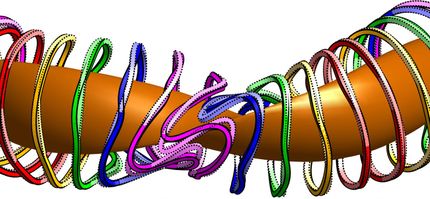“Mirror Station”: Jülich Develops Optical Components for ITER
Advertisement
An international working group coordinated by Forschungszentrum Jülich has completed a new mirror system for the ITER fusion reactor – the next great leap in worldwide fusion research – and for its successors. The system referred to as a “mirror station” has shutters that open and close automatically to protect optical components from being contaminated by particle flows in the vacuum vessel. The researchers have been testing the practical applicability of the module in the USA since mid-March.
Optical diagnostic methods are indispensable for researching and utilizing nuclear fusion further. The light produced in a plasma speaks volumes about its properties, such as its composition and the concentration of various isotopes and elements. Researchers all over the world are therefore looking for a solution suitable for carrying out this type of optical analyses at ITER and future power plants. Due to the intense neutron radiation, it will only be possible to observe the light indirectly, using mirror systems positioned at the plasma edge. In this zone, however, the mirrors are exposed to contamination from beryllium and tungsten particles removed from the wall materials during contact with the hot plasma.
The new mirror system for ITER has fast shutters made of monocrystalline molybdenum, which only uncover the mirror during the main phase of the plasma pulse. The shutters thus protect the sensitive optical components when the plasma is ignited, as the risk of contamination is at its highest during this phase. Since the very strong magnetic fields in the vacuum vessel interfere with electrical circuits, Jülich’s mirror station relies entirely on passive control. An additional magnetic field component is utilized for this purpose. It emerges as soon as the plasma in a tokamak reactor such as ITER ignites and it acts on a magnetic ferrite core in the “mirror station” which passively opens the protective shutters.
“We have already tested electromagnetic loading of the system in a tokamak environment and used our software codes developed at Jülich to minimize the release of contaminating atoms and their redeposition on the mirror surfaces. We believe that our development will make a very substantial contribution to making optical measurements possible at ITER,” says project head Dr. Andrey Litnovsky at Jülich’s Institute of Energy and Climate Research. Since mid-March, the practical applicability of Jülich’s “mirror station” has been put to the test in the US research reactor DIII-D in San Diego, California, which is a tokamak-type reactor like ITER. Further test runs are planned at the Chinese fusion experiment EAST in Hefei, at the ASDEX upgrade operated by the Max Planck Institute for Plasma Physics in Garching near Munich, Germany, and at Jülich’s TEXTOR tokamak.




























































